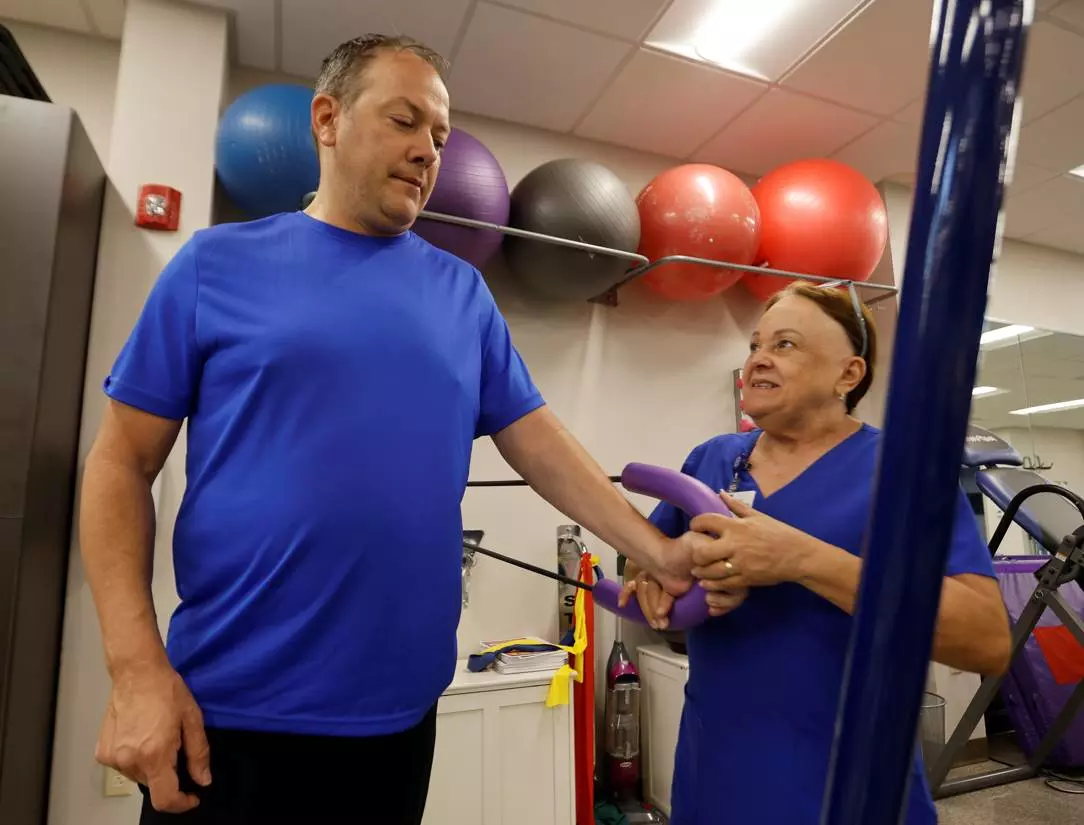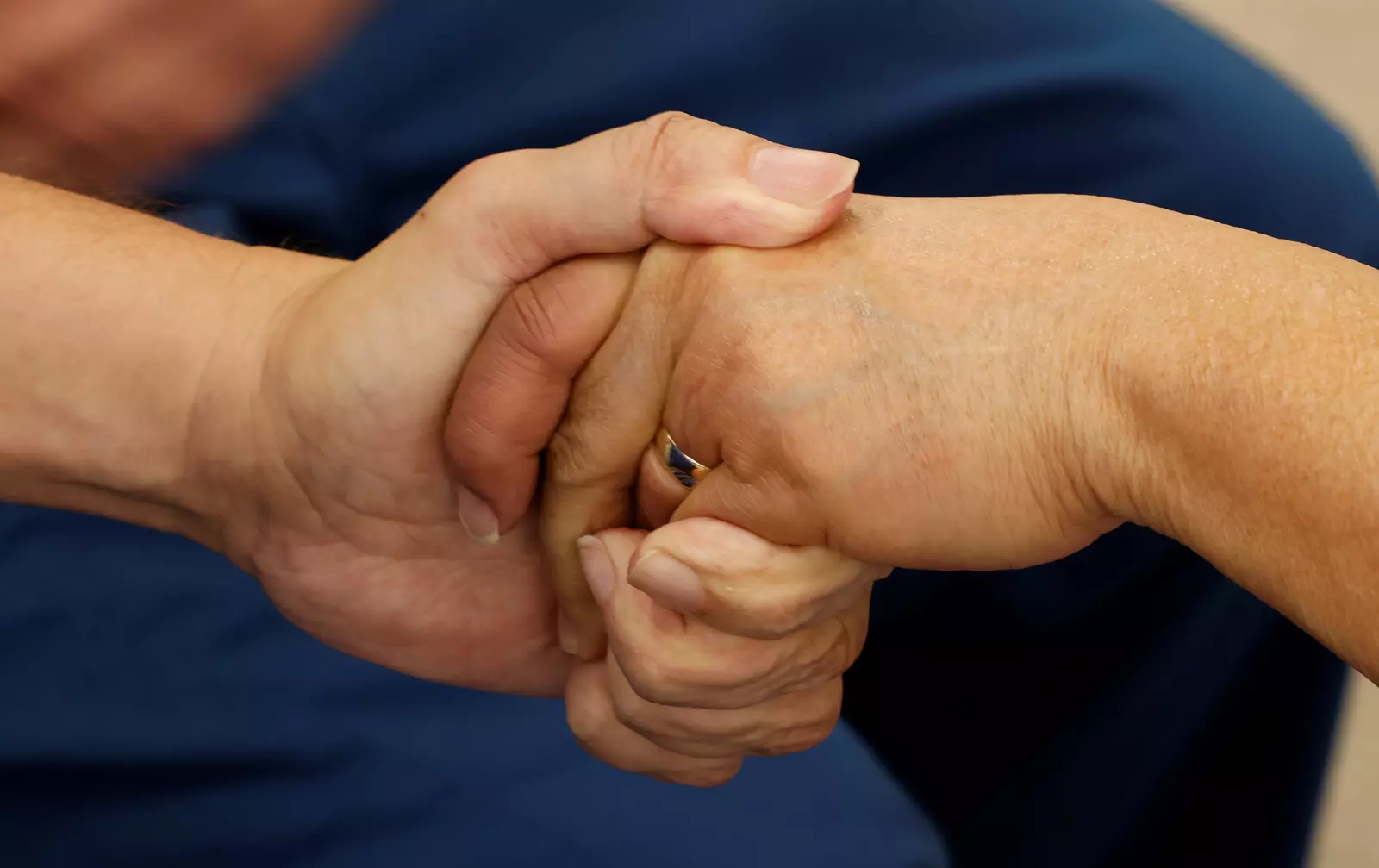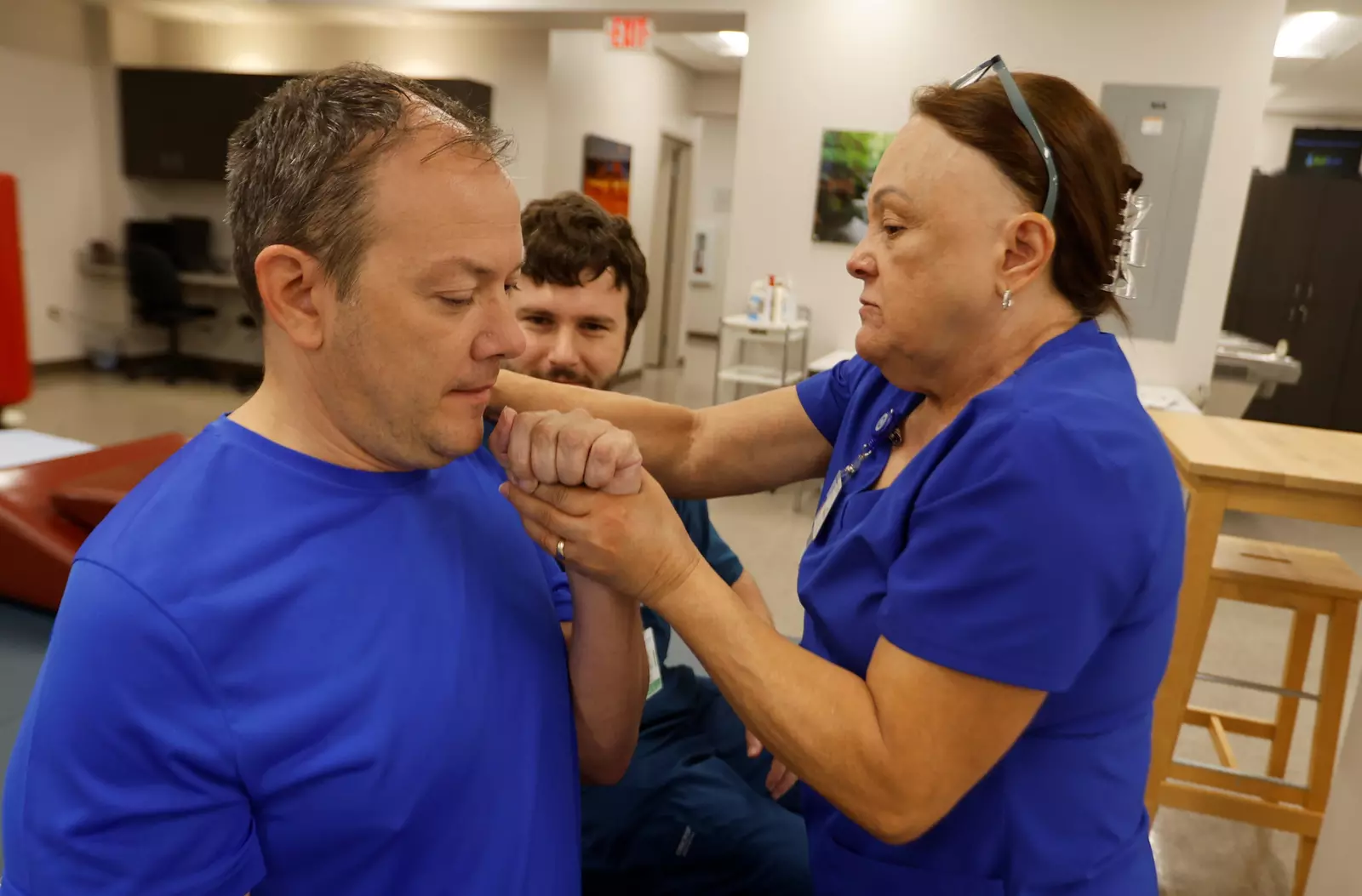- By Jennifer Audette
Choose the health content that’s right for you, and get it delivered right in your inbox.
Faculty at AdventHealth University’s Hope Clinic are receiving national recognition for a year-long study showing the positive impact of free long-term occupational therapy on low-income patients.
In late August, the American Journal of Occupational Therapy published an article that looks at the outcomes of uninsured and underinsured patients who received free weekly therapy sessions from Hope Clinic therapists and therapy student assistants.

“It’s very challenging to get published in the American Journal of Occupational Therapy,” said Milly Rodriguez, OTR/L, CLT, AdventHealth University faculty and clinical director of Hope Clinic, and co-author of the study. “This is so prestigious and brings great recognition to the important work we’re doing at Hope Clinic.”
Hope Clinic, opened in 2011, is a faculty-led, free-standing clinic providing free occupational therapy and physical therapy to children and adults who need treatment but cannot afford it. OT and PT students help patients under the supervision of faculty.
“There’s nothing like our clinic across the United States,” said Chia-Wei Fan, PhD, OTR/L, associate professor of occupational therapy at AdventHealth University and lead author of the study.
The significance of the study is the finding that long-term therapy at pro bono clinics can improve the occupational performance of clients.
“This study addressed health disparities in unique and effective ways,” the journal article states. “By using objective measures of functional mobility and self-care, the study provides robust evidence of the faculty-led clinic’s impact in providing underserved and uninsured communities with effective client-centered occupational therapy services.”
Occupational therapy is an allied health profession that helps a patient engage in meaningful daily activities, such as school, work, and social interaction despite impairments or limitations. This can include bathing, eating without assistance, doing laundry, and performing office work.
The study was funded through the AdventHealth University Faculty Research Seed Grant in 2018 that provided $6,000 – funds used to purchase research software and pay a research assistant. That research assistant was Kathryn Drumheller, MS, OTR/L, second author of the study who is now a staff therapist in Orange City. Sixty-four patients in the study received one hour of occupational therapy each week for one year (minus a few weeks at the beginning of the COVID-19 pandemic). The study used several clinical evaluation tools (mobility, self-care and quality-of-life assessments) to determine treatment effectiveness.
While the idea that any patient would improve after a year’s worth of occupational therapy seems entirely plausible, no study officially showed that yet.

“We needed to be able to show that yes, the impact is real,” Rodriguez said. “Working with an occupational therapist has a good impact on patients’ quality of life. We theorized this was true, but now we have the data to back us up.”
This is helpful, Rodriguez said, as they talk with current and prospective patients and their family members, insurance companies, and health care providers – particularly with a patient who has a chronic condition.
Often, health insurance companies will approve a maximum of six weeks of therapy following surgery, hospitalization, accident, or illness, such as a stroke or cardiac event. When the approved number of visits ends, patients are often provided with instructions for activities and movements to do at home.
“With chronic conditions, this study demonstrates a benefit to providing longer periods of therapy for longer periods of time,” said Christine Moghimi, ScD., MAS, OTR/L, chair of AdventHealth University’s Occupational Therapy Department and dean of academic leadership. “Patients don’t necessarily plateau at six weeks. This study shows that patients can continue to show improvement. Even three or four years post-stroke, therapy can still make a significant impact.”
As the results came in, this part of the study surprised the principal investigators.
“This really rattled our perception,” Fan said.
“This could even open the door to the idea of returning to therapy later on in life,” Moghimi said. “It changed my perception of the benefits of long-term therapy.”

Not all patients will benefit from long-term occupational therapy, but goal setting and assessments can help determine which patients have yet to reach their maximum potential, Rodriguez said.
The study, presented at this year’s American Occupational Therapy Association’s Annual Conference, was featured in the journal’s Authors & Issues YouTube series and granted Open Access, meaning its content is free and available for download to other health care professionals and researchers.
For at-risk patients, this study is more than just numbers. It is further proof that if a way exists for them to heal, patients often will thrive, the authors said.
“Being able to access this type of care gives them hope,” Moghimi said. “This underserved population is very motivated to do well and so grateful that something like this exists.”
Rodriguez adds: “This study shows that we believe in our patients and that makes them believe in themselves. It fosters a different mindset.”
The full American Journal of Occupational Therapy article can be found here.
Recent News
-
Health Care
A new way of treating bladder cancer is revolutionizing the field. AdventHealth Cancer Institute is the only site in Florida and first in the U.S. to open this treatment via a trial.
-
Health Care
Dr. Daryl Osbahr is a team orthopedic surgeon and team physician for the U.S. Men's National Soccer Team.
-
Health Care
Dr. Daryl Osbahr serves as team orthopedic surgeon and team physician for U.S. Men's National Soccer Team.
